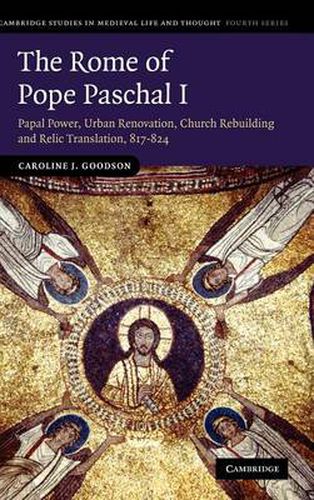Readings Newsletter
Become a Readings Member to make your shopping experience even easier.
Sign in or sign up for free!
You’re not far away from qualifying for FREE standard shipping within Australia
You’ve qualified for FREE standard shipping within Australia
The cart is loading…






In the early ninth century, a critical time in Rome’s transformation from ancient capital to powerful bishopric to new state capital, Pope Paschal I undertook a building campaign to communicate his authority and Rome’s importance as an ancient and contemporary seat of power. Combining analysis of contemporary chronicles and documents, architecture, mosaics and new archaeology of medieval Rome, Caroline J. Goodson examines Paschal’s urban project, revealing new patterns of popular saint veneration in resplendent new churches built using traditional architectural vocabularies. These transformations connect the city and the pope to the past and the present, in the same league as the Byzantine and Carolingian capitals and their emperors. By examining the relationships between the material world and political power in early medieval Rome, this innovative study reveals the importance of Rome’s sacred and urban landscape in constructing papal rule and influence both in the city and beyond.
$9.00 standard shipping within Australia
FREE standard shipping within Australia for orders over $100.00
Express & International shipping calculated at checkout
In the early ninth century, a critical time in Rome’s transformation from ancient capital to powerful bishopric to new state capital, Pope Paschal I undertook a building campaign to communicate his authority and Rome’s importance as an ancient and contemporary seat of power. Combining analysis of contemporary chronicles and documents, architecture, mosaics and new archaeology of medieval Rome, Caroline J. Goodson examines Paschal’s urban project, revealing new patterns of popular saint veneration in resplendent new churches built using traditional architectural vocabularies. These transformations connect the city and the pope to the past and the present, in the same league as the Byzantine and Carolingian capitals and their emperors. By examining the relationships between the material world and political power in early medieval Rome, this innovative study reveals the importance of Rome’s sacred and urban landscape in constructing papal rule and influence both in the city and beyond.